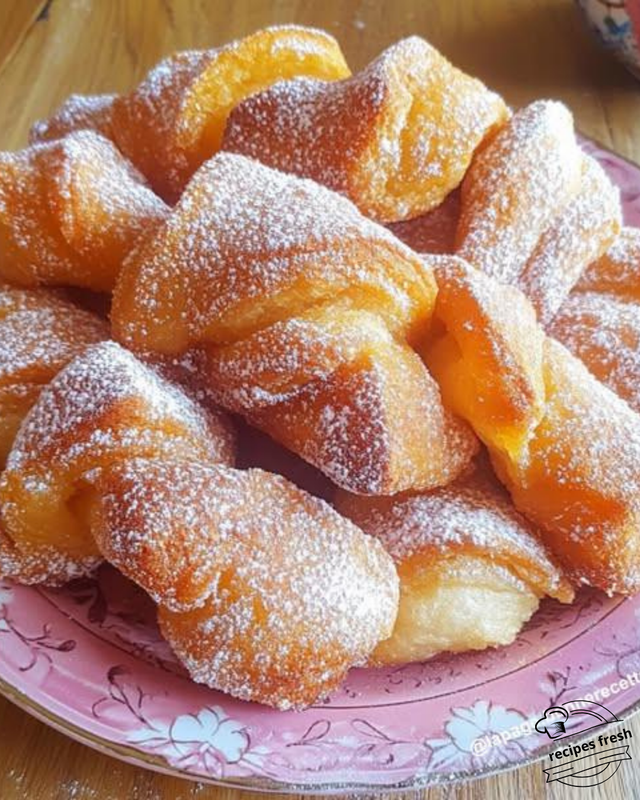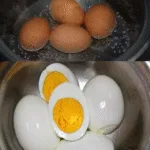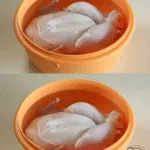Homemade French Brioche Bread Recipe – Delightfully Fluffy and Delicious
Introduction
If there's a bread staple that symbolizes perfect indulgence, it's definitely the French Brioche bread. Soft, buttery, lightly sweet, and featuring a rich fluffy texture, brioche bread continues to melt hearts and delight palates all over the world. Originating from France, this traditional Viennoiserie-style bread evokes an air of sophistication and comfort.
In this guide, you will learn step-by-step the perfect method to make an authentic French brioche bread. Suitable for beginners as well as seasoned home bakers, this detailed recipe provides comprehensive instructions to ensure success every time. Let's dive deep into the world of French Brioche baking!
Serving Size and Preparation Time:
- Serves: 6–8 people
- Total Time: 2 hours and 30 minutes
- Preparation Time: 30 minutes
- Resting (Proofing) Time: 1 hour 30 minutes
- Baking Time: 30 minutes
Why Choose Homemade Brioche?
Making brioche bread at home gives unbeatable freshness unmatched by store-bought varieties. The aroma of freshly baked buttery brioche wafting through your kitchen is worth every minute spent preparing it. Plus, homemade bread allows full control over ingredients, ensuring additive-free enjoyment.
Understanding the Ingredients
The key to excellent brioche bread lies in quality ingredients. Here's exactly what you need for authentic brioche bread.
Ingredients:
- 500 g (4 cups) of all-purpose flour or bread flour, sifted
- 1 tablespoon (10 grams) active dry yeast
- 100 ml warm whole milk (slightly warm, not hot)
- 4 eggs (room temperature)
- 50 g (1/4 cup) granulated sugar
- 180 g (3/4 cup) unsalted butter (room temperature)
- 1 teaspoon finely ground sea salt
- Egg wash (1 egg beaten with a tablespoon of milk or cream)
Why These Ingredients?
- Flour: All-purpose or bread flour will yield a strong gluten structure that provides perfect texture.
- Yeast: Active dry yeast works best, allowing proper rising.
- Milk and Eggs: Essential for moisture, richness, and the signature golden color.
- Sugar: Provides mild sweetness, aids yeast activity, and helps with the golden-brown crust.
- Butter: Brioche is famous for high butter content and rich flavor. Good-quality butter is essential.
Step-by-Step Directions to Make French Brioche
Step 1: Preparing the Dough Base (10 minutes)
- In a bowl, mix warm milk and active dry yeast. Let it rest for about 5-10 minutes until yeast becomes frothy.
- Next, in a large mixing bowl, combine sifted flour, sugar, and salt. Make a well in the center, pour in eggs (lightly beaten), and yeast-milk mixture.
- With a wooden spoon or stand-mix dough hook, mix until ingredients start coming together into a shaggy dough.
Step 2: Kneading and Adding Butter (10 minutes)
- Knead gently for about 5 minutes until dough becomes relatively smooth and elastic.
- Gradually, start adding the softened butter, piece by piece, kneading thoroughly after each addition. You might think it's too buttery or sticky; refer to this consistency as normal in brioche dough.
- Keep kneading for an additional 5 minutes until a smooth and homogeneous dough forms. Dough should feel soft, elastic, and glossy.
Step 3: First Dough Rise (Resting – 1 Hour)
- Lightly grease a large mixing bowl with butter. Place the dough in the bowl, cover with plastic wrap or a damp kitchen towel, and let it rise at room temperature for about 1 hour or until doubled in size.
Step 4: Shaping brioche (5–10 minutes)
- Once the dough has risen, punch it down gently and turn it out onto a lightly floured surface.
- Divide the dough into small balls or strands. Traditional brioche is often made in braid-form or in individual molds. For simplicity, shape the dough into 3 even portions, then braid loosely for a beautifully shaped loaf.
- Transfer the dough carefully into a buttered loaf pan or individual molds.
Step 5: Second Dough Rise (Resting – 30 minutes)
- Cover the dough again and allow it to proof once more for about 30 minutes until puffy and increased in volume.
Step 6: Preparing and Baking (30 minutes)
- Preheat your oven to 180°C (350°F).
- Gently brush the surface of the risen dough with egg wash to ensure a golden, shiny finish.
- Bake your brioche bread for about 30 minutes, ensuring it is evenly browned and cooked thoroughly. You can test with a toothpick or skewer inserted in the center—if it comes out clean, it's ready!
- Cool the bread on a wire rack.
Serving and Enjoying Brioche Bread
Brioche bread is incredibly versatile. Serve it fresh out of the oven with some good-quality jam, honey, chocolate spread, or butter. You could also use stale Brioche bread (day-old) to prepare French toast, bread pudding, or serve alongside savory meals or charcuterie.
Commonly Asked FAQs about Homemade French Brioche Bread:
-
Can I substitute active dry yeast with instant yeast?
Yes, instant yeast can be substituted. Simply mix instant yeast directly into dry ingredients without dissolving in milk first. -
Can I use salted butter for brioche?
Unsalted butter is preferred for consistency but you can use salted butter. However, reduce or omit additional salt listed. -
Can brioche dough be refrigerated overnight?
Yes, refrigerating overnight greatly enhances flavor and dough texture. Allow the dough to sit at room temperature briefly (approximately 30 minutes) prior to shaping. -
My dough feels greasy and sticky—is this normal?
Absolutely! Brioche dough deliberately includes excess butter, making it very rich and smooth. If dough overly sticks, try minimally floured hands and surfaces during handling. -
Can brioche bread be frozen to store?
Yes, Brioche bread freezes beautifully. Allow freshly baked bread to cool completely, wrap tightly, and freeze up to 2 months. -
What to do if my dough isn't rising properly?
Check yeast freshness, dough temperature, and ambient room conditions. Brioche dough generally takes longer to rise due to high butter and sugar content. Have patience or choose a slightly warmer spot.
Conclusion:
Baking brioche bread might initially seem intimidating for beginners, yet the delightful outcome justifies effort and patience. It's an achievement that feels incredibly satisfying once mastered. Armed with this step-by-step recipe guide, ingredients, and insightful FAQs, you're ready to create amazing homemade French brioche bread that will impress family, friends, and yourself. With practice, you'll begin to relish the baking experience, and soon brioche bread-making will become second nature. Enjoy your homemade creation, always served from the heart!
Happy baking!





